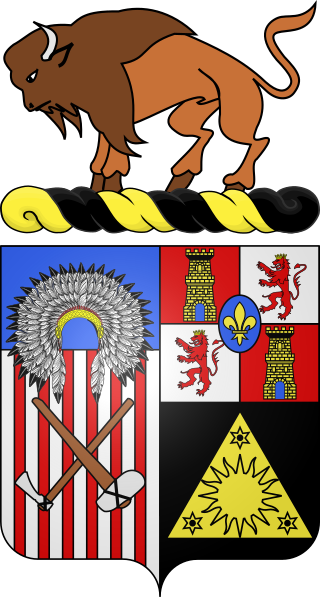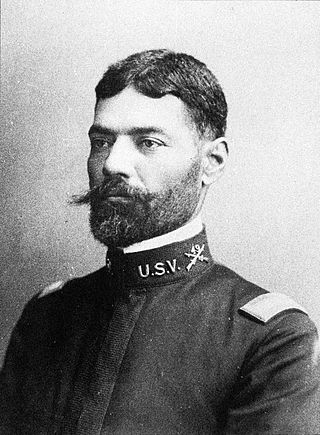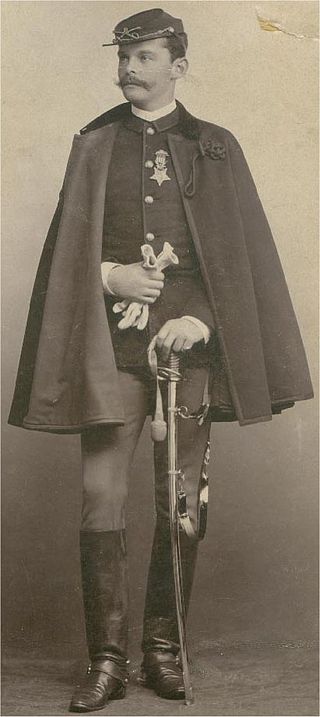Fitz Lee | |
|---|---|
| Born | June 1866 Dinwiddie County, Virginia |
| Died | September 14, 1899 (aged 33) |
| Place of burial | |
| Allegiance | United States of America |
| Service | United States Army |
| Years of service | 1889 - 1894, 1897 - 1899 |
| Rank | Private |
| Unit | Troop M, 10th Cavalry Regiment |
| Battles / wars | Spanish–American War *Battle of Tayacoba |
| Awards | Medal of Honor |
Fitz Lee (June 1866 – September 14, 1899) was a Buffalo Soldier in the United States Army and a recipient of America's highest military decoration—the Medal of Honor—for his actions at the Battle of Tayacoba in the Spanish–American War. Lee and three of his fellow Buffalo Soldiers were the last black servicemen to be presented the Medal of Honor for more than half a century.
Lee joined the Army from Philadelphia, Pennsylvania in December 1889, [1] and by June 30, 1898, he was serving as a private in Troop M of the 10th Cavalry Regiment. On that day, American forces aboard the Florida near Trinidad, Cuba, dispatched a landing party to provide reconnaissance on Spanish outposts in the area. The party was discovered by Spanish scouts and came under heavy fire; their boats were sunk by enemy cannon fire, leaving them stranded on shore.
The men aboard the Florida launched several rescue attempts; the first four were forced to retreat under heavy fire. The fifth attempt, by Lee and three other privates of the 10th Cavalry (Dennis Bell, William H. Thompkins and George H. Wanton) under the command of Lieutenant Ahern, was launched at night and successfully found and rescued the surviving members of the landing party. One year later, on June 23, 1899, four of the rescuers were awarded the Medal of Honor for their actions in what had come to be known as the Battle of Tayacoba.
Fitz Lee died less than three months after receiving the medal. He was buried in Fort Leavenworth National Cemetery, Leavenworth County, Kansas.
Private Lee's official Medal of Honor citation reads:
After a force had succeeded in landing and had been compelled to withdraw to the boats, leaving a number of killed and wounded ashore, he voluntarily went ashore in the face of the enemy and aided in the rescue of his wounded comrades who would otherwise have fallen into the hands of the enemy, this after several previous attempts had been frustrated.

Buffalo Soldiers were United States Army regiments composed exclusively of African American soldiers, formed during the 19th century to serve on the American frontier. On September 21, 1866, the 10th Cavalry Regiment was formed at Fort Leavenworth, Kansas. The nickname "Buffalo Soldiers" was purportedly given to the regiments by the American Indian tribes who fought against them during the American Indian Wars, and the term eventually became synonymous with all of the African American regiments that were established in 1866, including the 9th Cavalry Regiment, 10th Cavalry Regiment, 24th Infantry Regiment, 25th Infantry Regiment and 38th Infantry Regiment.

The Battle of Tayacoba, June 30, 1898, was an American special operations effort to land supplies and reinforcements to Cuban rebels fighting for their independence in the Spanish–American War.

Fort Leavenworth National Cemetery is a United States National Cemetery located on Fort Leavenworth, a United States Army installation north of Leavenworth, Kansas. It was officially established in 1862, but was used as a burial ground as early as 1844, and was one of the twelve original United States National Cemeteries designated by Abraham Lincoln. The cemetery is the resting place of nine Medal of Honor recipients, but most are the less famous casualties of war. It was named for Brigadier General Henry Leavenworth, who was re-interred there in 1902 from Woodland Cemetery in Delhi, New York. Administered by the United States Department of Veterans Affairs, it occupies approximately 36.1 acres (14.6 ha) and was site to over 22,00 interments, as of 2020. It is maintained by Leavenworth National Cemetery.

Henry Johnson was a Buffalo Soldier in the United States Army and a recipient of America's highest military decoration – the Medal of Honor – for his actions in the Indian Wars of the western United States.

The 10th Cavalry Regiment is a unit of the United States Army. Formed as a segregated African-American unit, the 10th Cavalry was one of the original "Buffalo Soldier" regiments in the post–Civil War Regular Army. It served in combat during the Indian Wars in the western United States, the Spanish–American War in Cuba, Philippine–American War and Mexican Revolution. The regiment was trained as a combat unit but later relegated to non-combat duty and served in that capacity in World War II until its deactivation in 1944.

Dennis Bell was a Buffalo Soldier in the United States Army and a recipient of America's highest military decoration—the Medal of Honor—for his actions in the Spanish–American War. Bell and three of his fellow Buffalo Soldiers were the last black servicemen to be presented the Medal of Honor for more than half a century.

Edward Lee Baker Jr. was an African-American United States Army Captain who received the Medal of Honor for actions during the Spanish–American War. While under fire, he rescued a wounded soldier from drowning.

William H. Thompkins was a Buffalo Soldier in the United States Army and a recipient of America's highest military decoration—the Medal of Honor—for his actions in the Spanish–American War. Thompkins and three of his fellow Buffalo Soldiers were the last black servicemen to be presented the Medal of Honor for more than half a century.
George Henry Wanton was a Buffalo Soldier in the United States Army and a recipient of America's highest military decoration—the Medal of Honor—for his actions in the Spanish–American War. Wanton and three of his fellow Buffalo Soldiers were the last black servicemen to be presented the Medal of Honor for more than half a century.

Garfield McConnell Langhorn was a United States Army soldier and a recipient of America's highest military decoration—the Medal of Honor—for his actions in the Vietnam War.
James Allen Taylor is a retired United States Army officer and a recipient of the United States military's highest decoration—the Medal of Honor—for his actions in the Vietnam War.

Charles Chris Hagemeister was a United States Army officer and a recipient of the United States military's highest decoration, the Medal of Honor, for his actions in the Vietnam War.

Hugh Jocelyn McGrath was a captain in the United States Army and a Medal of Honor recipient for his actions in the Philippine–American War.

Powhatan Henry Clarke was a United States Army first lieutenant who was a recipient of the Medal of Honor during the Geronimo Campaign in Sonora, Mexico. He received the medal for rescuing a wounded soldier on May 3, 1886.

Charles Patterson Cantrell was a private serving in the United States Army during the Spanish–American War who received the Medal of Honor for bravery.
Alfred Polond was a private serving in the United States Army during the Spanish–American War who received the Medal of Honor for bravery.
Andrew Johnson Cummins was a sergeant serving in the United States Army during the Spanish–American War who received the Medal of Honor for bravery.

James J. Nash was a soldier serving in the United States Army during the Spanish–American War who received the Medal of Honor for bravery.
William G. Keller was a private serving in the United States Army during the Spanish–American War who received the Medal of Honor for bravery.